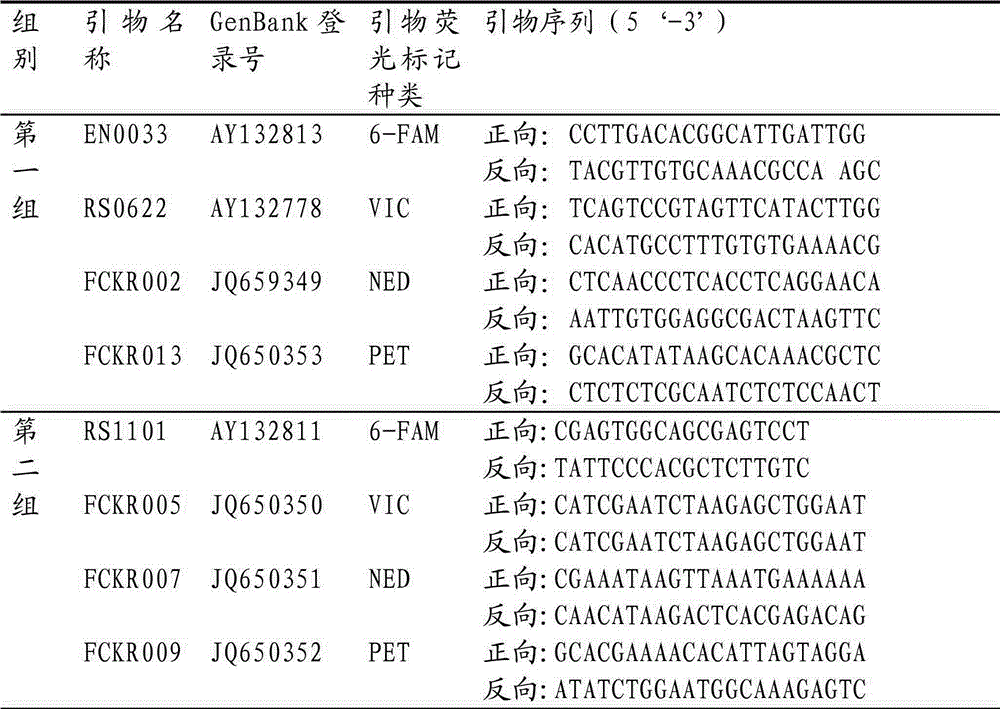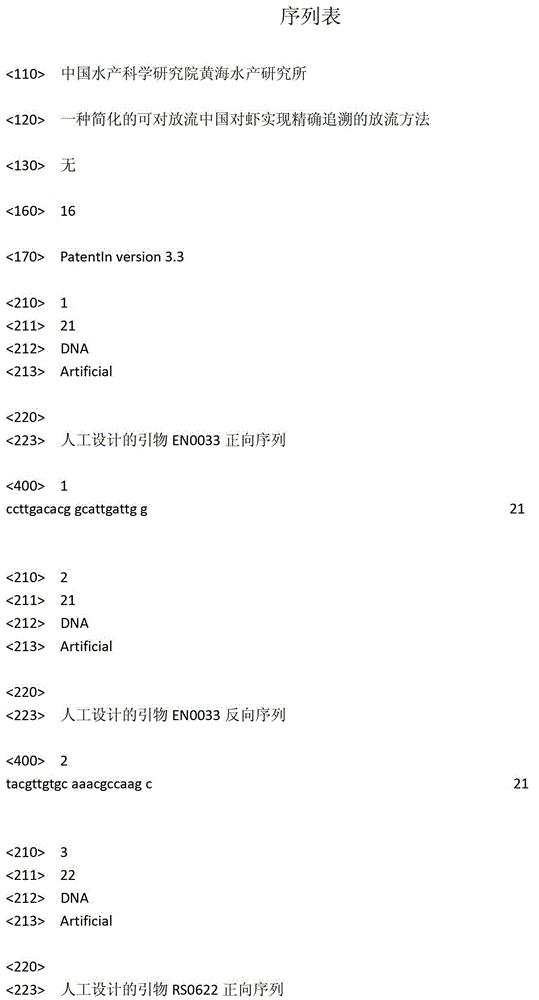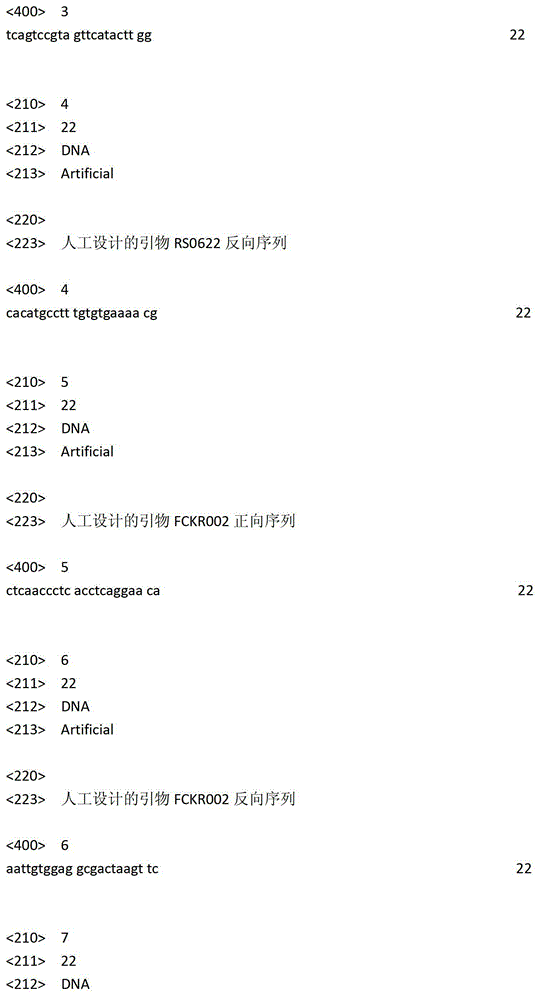Simplified releasing method capable of accurately tracing released Fenneropenaeus chinensis
An accurate technology for Chinese prawns, applied in the fields of climate change adaptation, animal husbandry, fish farming, etc., which can solve the problems of strict requirements on individual specifications, accurate estimation of the return catch rate, and cumbersome operation, and achieve the effect of simplifying the preparation.
- Summary
- Abstract
- Description
- Claims
- Application Information
AI Technical Summary
Problems solved by technology
Method used
Image
Examples
Embodiment 1
[0027] Embodiment 1: Establishment of marking and releasing populations and methods
[0028] 1. Tracing individuals of Chinese shrimp families with specific molecular fingerprints
[0029]The offspring bred by each pair of parents have a consistent DNA molecular fingerprint, which is unique to the individual / family and is different from other families and individuals and lasts a lifetime. Using this specific molecular fingerprint and referring to the parental genotype, a specific individual / family can be accurately identified from a mixed population. The microsatellites of Penaeus chinensis are widely distributed in the genome, and the level of genetic variation is rich, which has the characteristics of genetic selection neutrality. The molecular fingerprint formed by the combination of different genotypes of microsatellite molecular markers is an ideal tool for individual / family identification. Taking the Chinese prawn microsatellite loci independently developed by the labo...
Embodiment 2
[0036] Example 2: Small scale testing
[0037] In 2010, a simulation experiment of releasing water by using the method of the present invention was carried out at the Aoshanwei Experimental Base of the Yellow Sea Fisheries Research Institute. The specific implementation method is: randomly collect 10 sea-caught mating female shrimps in spring, and physically mark the individuals through eye-stalk markers. The mating female shrimps are individually cultivated into families. 100 tails were randomly selected for physical fluorescent labeling. Randomly collected 2000 larvae of the same size and 300 individuals from the above three families for polyculture. In mid-August of that year, after all individuals were collected, the first group of Chinese shrimp fluorescently labeled microsatellite quadruple PCR reaction system described in Table 1 was used. The composition of the PCR reaction system and the amplification procedure were the same as in Example 1. Using the quadruple PCR ...
PUM
 Login to View More
Login to View More Abstract
Description
Claims
Application Information
 Login to View More
Login to View More - R&D
- Intellectual Property
- Life Sciences
- Materials
- Tech Scout
- Unparalleled Data Quality
- Higher Quality Content
- 60% Fewer Hallucinations
Browse by: Latest US Patents, China's latest patents, Technical Efficacy Thesaurus, Application Domain, Technology Topic, Popular Technical Reports.
© 2025 PatSnap. All rights reserved.Legal|Privacy policy|Modern Slavery Act Transparency Statement|Sitemap|About US| Contact US: help@patsnap.com



